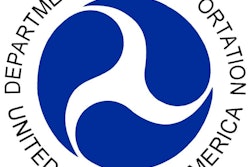By John Latta, [email protected]

This information comes from a survey that shows something we already know – highway construction site accidents kill.
And it’s always troubling when we know something is lethal but can’t quite find a way to make it exponentially safer. A vast majority of highway contractors want to start with the two moves aforementioned. If we are in a bipartisan desert at the moment, surely tougher laws and more mandatory training can be oases.
Both sides may quibble about the oft-heard argument that there “are no Democratic or Republican roads or bridges,” but they cannot disagree that every death in a highway construction site accident diminishes all of us. And from a pragmatic point of view, it would not cost a lot to make these moves.
Thirty-eight percent of highway contractors had motor vehicles crash into their construction work zones during the past year, according to the new highway work zone study conducted by the Associated General Contractors of America (AGC).
That seems like a significantly high number to me. The study found work zone crashes are more likely to kill vehicle operators and passengers than construction workers.
Mike Hoover, the chair of the association’s national highway and transportation division and executive vice president of Tempe, Arizona-based Sundt Construction, says 46 percent of contractors reported that motor vehicle operators or passengers were injured during work zone crashes this past year, and 14 percent were killed in those crashes.
More than 18 percent of work zone crashes injure construction workers, and 8 percent of those crashes kill them.
The report also finds that 21 percent of contractors reported that work zone crashes during the past year have forced them to temporarily shut down construction activity and 30 percent of those project shutdowns lasted two or more days.
AGC says 68 percent of contractors nationwide feel that tougher laws, fines and legal penalties for moving violations in work zones would reduce injuries and fatalities. And 70 percent of contractors nationwide agree that more frequent safety training for workers could help.
New Address: Greenest Street, Chicago, Illinois.
It’s “the greenest street in America.”
That’s what the Chicago DOT says of Cermak Road. So it must be true.
There’s been a lot written about it, but basically, it’s a streetscape that includes natural landscaping, bicycle lanes, wind-powered lighting, storm water diversion for irrigation, drought-resistant native plants and innovative “smog-eating” concrete.
Chicago’s DOT is finding ways to make some startlingly green and sustainable improvements in their road work and management, and doing it with a very efficient use of taxpayer funds. Their mantra basically is that this sort of work should be done and – surprise – you can do it cost-effectively.
Our guess is that a lot of big cities in America are keeping an eye on what is happening with Chicago roads and sitting around tables to figure out how they can do the same thing.
SAY WHAT?
Texting while driving is “reckless and irresponsible. … However, the key to dissuading drivers from texting while driving is information and education, not government micromanagement.”
– Texas Gov. Rick Perry, opposing a ban on texting while driving in the Lone Star State.












